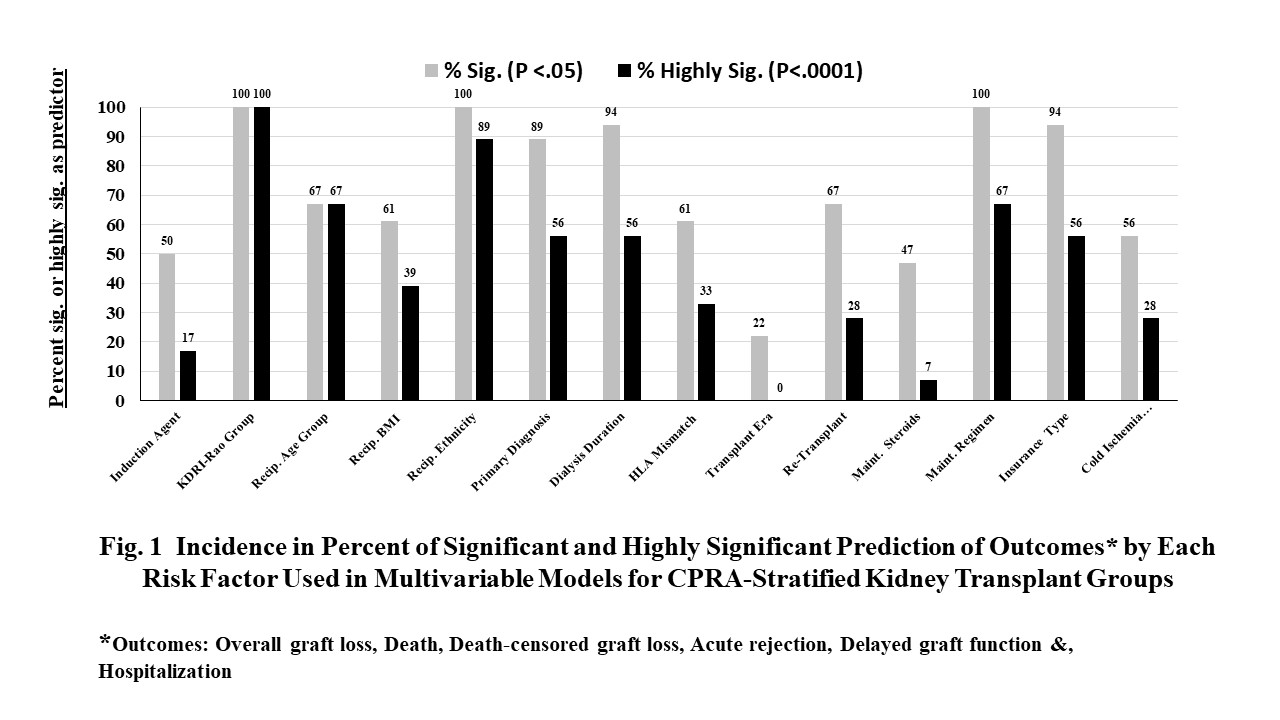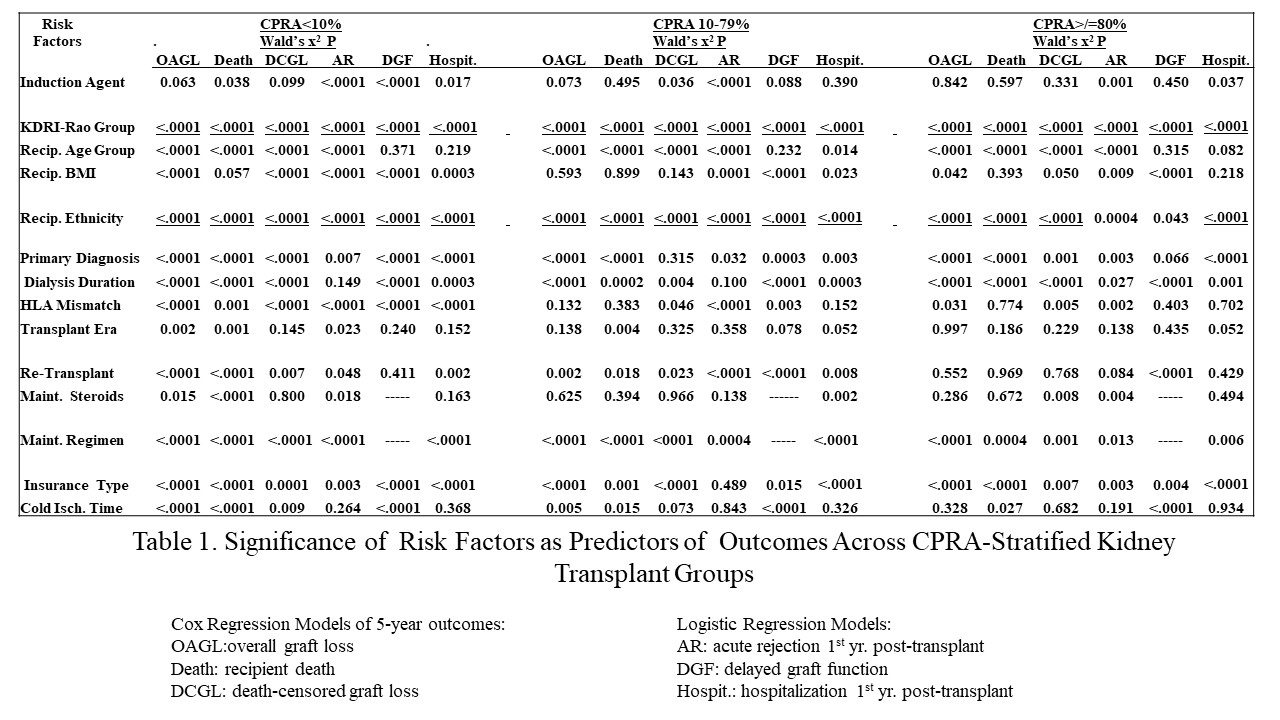Kidney Donor Risk Index: Significance as a Predictor of Kidney Transplant Outcomes Beyond Allograft Survival, Analysis of 18 Adjusted Regression Models Involving Adult Deceased Donor Kidney Recipients
A. Santos, E. Bueno, M. A. Leghrouz
University of Florida, Gainesville, FL
Meeting: 2021 American Transplant Congress
Abstract number: 175
Keywords: Donors, unrelated, Graft failure, Immunosuppression, Prediction models
Topic: Clinical Science » Kidney » Kidney Complications: Non-Immune Mediated Late Graft Failure
Session Information
Session Name: Kidney Complications
Session Type: Rapid Fire Oral Abstract
Date: Sunday, June 6, 2021
Session Time: 6:00pm-7:00pm
 Presentation Time: 6:10pm-6:15pm
Presentation Time: 6:10pm-6:15pm
Location: Virtual
*Purpose: We aimed to study the role of kidney donor recipient index (KDRI) as a predictor for multiple transplant-related outcomes in adult deceased-donor (DD) kidney transplant (KT) recipients (KTR).
*Methods: Using OPTN data, we used multivariable logistic regressions to analyze the 1-yr. post-kidney transplant likelihood of acute rejection (AR), delayed graft function (DGF), and hospitalization; and multivariable Cox models to analyze 5-year risks of overall graft loss (OAGL), death, and death-censored graft loss (DCGL) inDD- KTRs stratified into groups based on CPRA levels of <10%, 10%-79%, and >/=80%. In all the 18 regression analyses, we used a uniform set of 14 risk factors (RF)s including kidney donor risk index by Rao (KDRI-Rao). We used the Wald Chi-sq. P for each model in classifying RF as a significant (P<.05) and/or highly significant (P<.0001) outcome predictor.
*Results: Among over sixty-two thousand DDKTRs studied, KDRI-Rao was the most highly significant risk factor (RF) with a P<.0001 for all (100%) outcomes (OAGL, death, DCGL, AR, DGF, and hospitalization) in all CPRA groups (Fig. 1). Ethnicity/race of KTRs and maintenance immunosuppression regimen at discharge were significant RFs (P<.05) in 100% and highly significant RFs (P<.0001) in 89% and 67% of analyses conducted, respectively (Fig. 1). Induction agent, HLA mismatch (HLA-mm), and recipient age group were significant or highly significant RFs for 1-year AR in all CPRA groups (Table 1). Cold ischemia time is a highly significant RF for DGF and pre-transplant dialysis as well as insurance type were significant RFs for DGF and hospitalization in all CPRA groups (Table 1). Finally, recipient age group was a highly significant RF; while pre-transplant dialysis duration and insurance type were significant RFs for 5-year (OAGL, death, DCGL) outcomes (Table 1).
*Conclusions: KDRI-Rao is a consistent highly significant predictor of allograft and other important outcomes after adult DDKT. Therefore, KDRI or its derivative kidney donor performance index (KDPI) should be considered in adjustments of multivariable models in adult kidney transplant studies.
To cite this abstract in AMA style:
Santos A, Bueno E, Leghrouz MA. Kidney Donor Risk Index: Significance as a Predictor of Kidney Transplant Outcomes Beyond Allograft Survival, Analysis of 18 Adjusted Regression Models Involving Adult Deceased Donor Kidney Recipients [abstract]. Am J Transplant. 2021; 21 (suppl 3). https://atcmeetingabstracts.com/abstract/kidney-donor-risk-index-significance-as-a-predictor-of-kidney-transplant-outcomes-beyond-allograft-survival-analysis-of-18-adjusted-regression-models-involving-adult-deceased-donor-kidney-recipients/. Accessed December 27, 2025.« Back to 2021 American Transplant Congress


